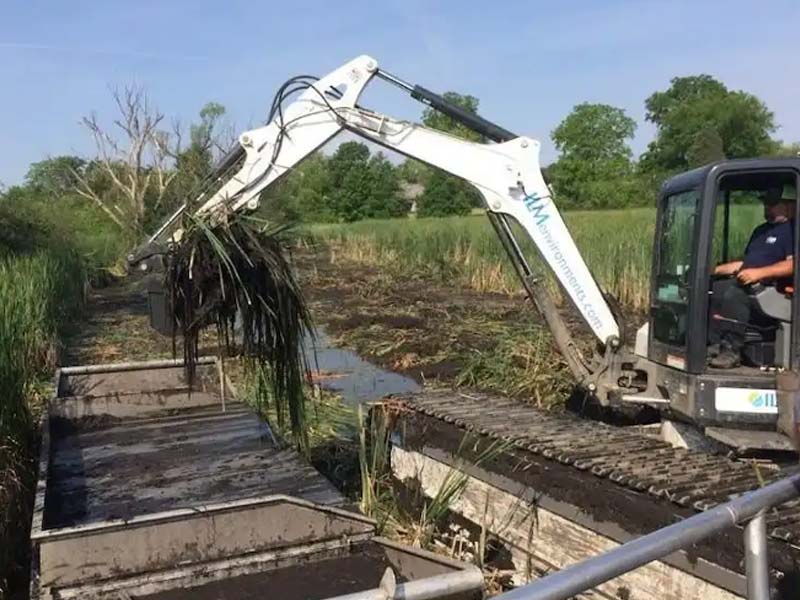Wetland Restoration
Save and protect your local environments.
ILM Specializes in Wetland Restoration
and Wetland Re-Creation.
What is a Wetland?
Wetlands are found at the intersection of land and water and come in many forms. Marshes, bogs, fens and floodplains, are just a few but all wetlands have the same things in common. They are wet for at least a portion of the year, have special soils developed under wet conditions, and support water-loving plants. Wetlands support diverse plant and animal life, improve water quality, reduce erosion and flooding, store carbon, and help buffer the impacts of climate change. They’re also beautiful places for recreation like hiking, paddling, and birdwatching. Given all they do, it is important to protect wetlands and keep them healthy.
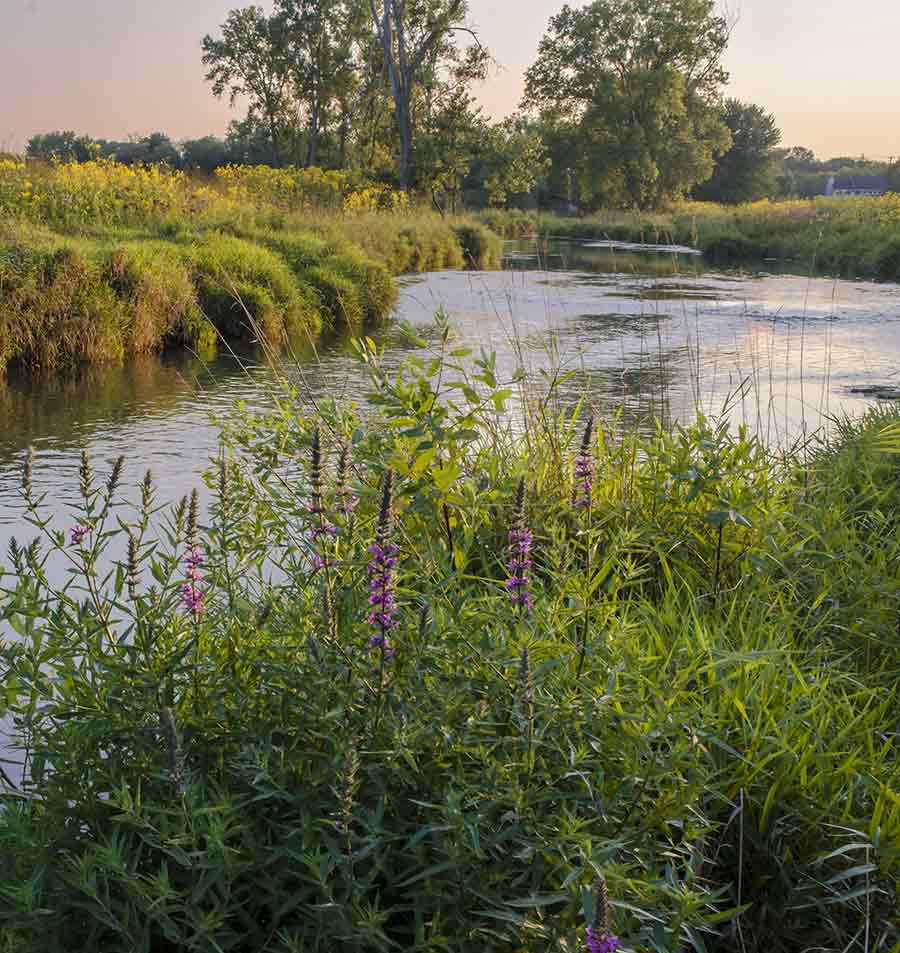
Loss of Wetlands in the United States
Since European settlement, the United States has lost an estimated 50% of its original wetlands, mostly for agriculture, development, and infrastructure. Today, fewer than 110 million wetland acres remain, resulting in major impacts on water quality, wildlife habitat, and flood control.
Recreating and Restoring Wetlands
There is a strong and growing emphasis on recreating wetlands in the U.S., driven by their critical role in environmental health and climate resilience. Agricultural land is a prime candidate for wetland recreation by removing the drainage systems originally installed to move water off the land. Tile drains, ditches, and pumps that dry out the land are plugged, filled, or removed to allow water to return and saturate the soil. The field may be reshaped to create shallow depressions or basins that hold water and mimic natural wetland hydrology. Nearby streams or floodplains may be reconnected to the site to ensure regular flooding and water exchange. Finally, native grasses, sedges, and aquatic plants are introduced to stabilize soil, filter water, and provide habitat. Ongoing management is required to prevent invasive species from taking over the site and allow native vegetation to thrive.
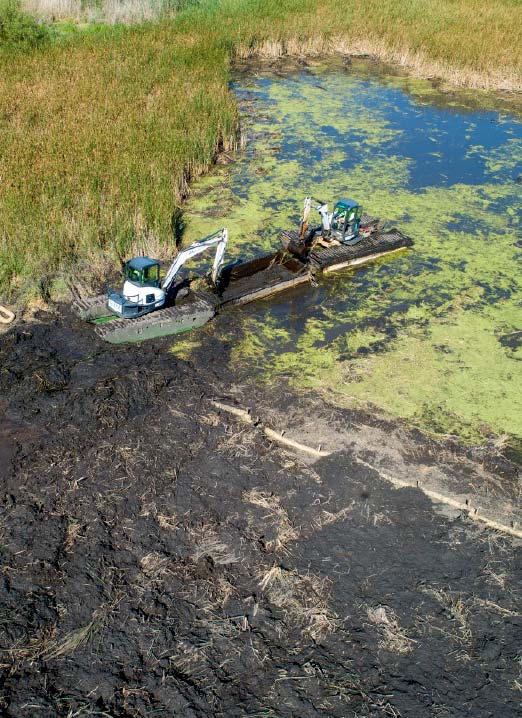
Wetland restoration at Pingree Grove. View the project here.
Wetland Restoration Service Examples
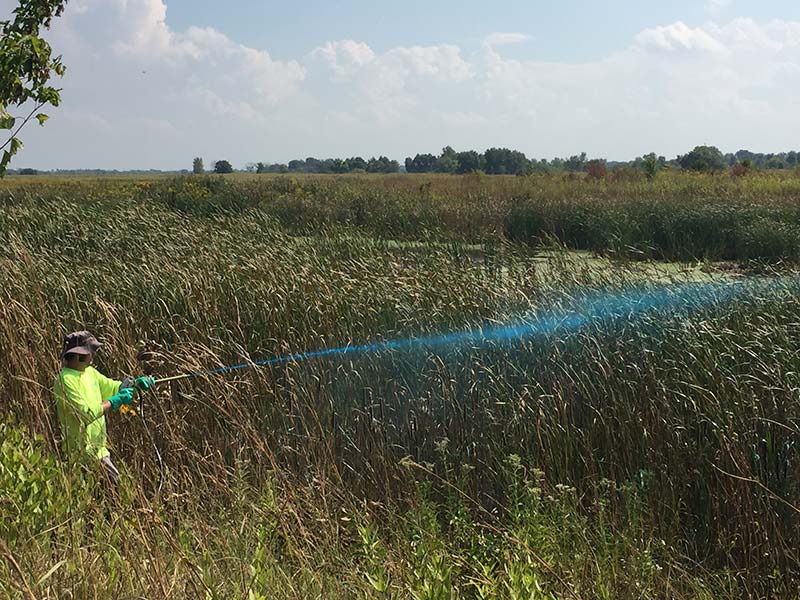
Invasive Plant Control
Invasive wetlands plants like narrowleaf cattail (Typha angustifolia), hybrid cattail (Typha x glauca), and giant reed (Phragmites australis ) are a concern due to their aggressive spread and ability to displace native plant species and wildlife. A targeted approach for their control often combines herbicide treatment with physical management.
The best time to apply a wetland-approved herbicide is late summer to early fall, when plants are storing energy in their roots. Herbicide is wiped directly to tall stems or sprayed using a backpack sprayer to coat the leaves and stems. Wait 2–3 weeks after herbicide application to allow it to move into the roots. Then cut or mow dead stalks to remove biomass and open the canopy for native regrowth. In large areas, burning dead material is an option, but this does require permits.
One treatment is rarely enough. It typically takes 2–3 years of follow-up to fully control cattails or phragmites, especially in dense stands.
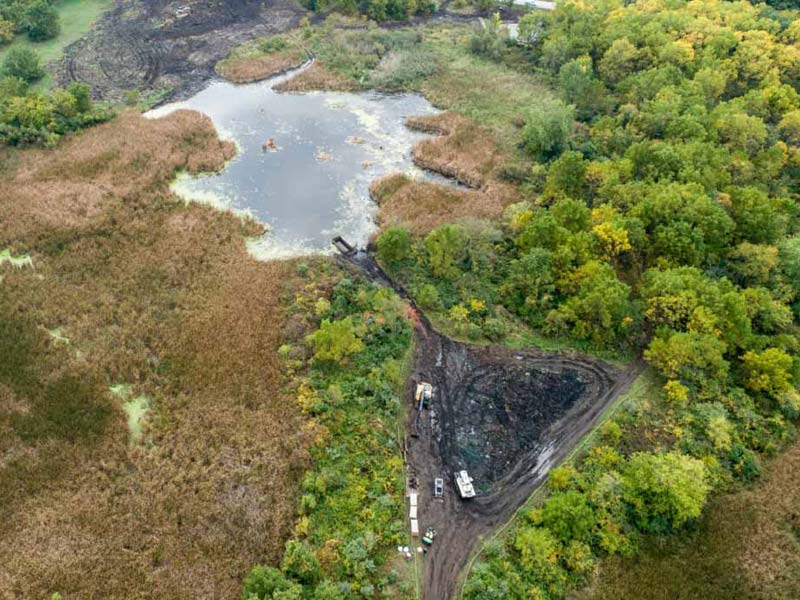
Wetland Scrape
A wetland scrape is a shallow excavation made to create or enhance wetland habitat by lowering the land surface to encourage water to collect. It is designed to hold seasonal or permanent water and improves conditions for native plants and wildlife while supporting water retention, flood control and improved water quality. Excavators dig out material 6 inches to 2 feet deep and these “pockets” are often left unplanted to create open water habitats. Wetland scrapes are especially beneficial for waterfowl, reptiles and amphibians.
Recent wetlands scrapes include the Forest Preserve District of Kane County (Pingree Grove 2023) and Lake County Stormwater Management Commission (Mill Creek 2025).
Take an in-depth look at a our Pingree Grove Wetland Scrape project.
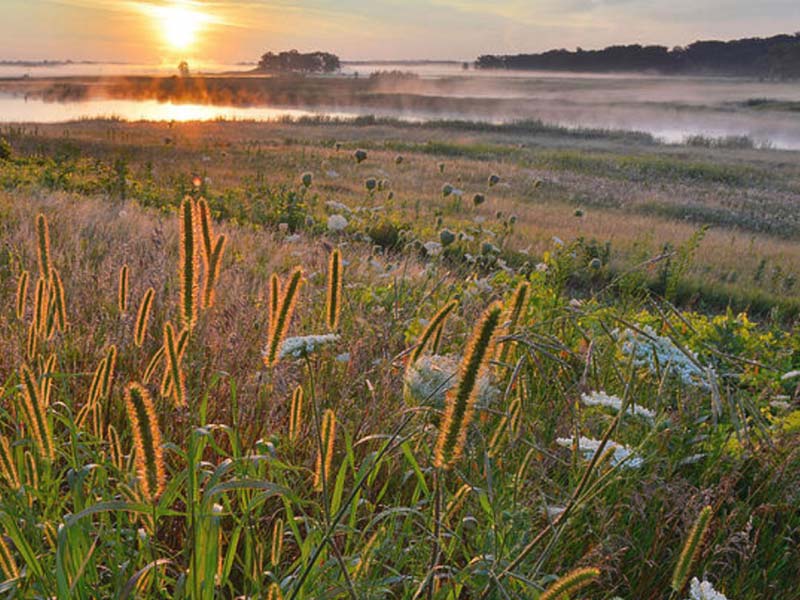
Wetland Re-creation
Hackmatack National Wildlife Refuge is a growing conservation landscape straddling McHenry County, IL, and Walworth County, WI, just between the Chicago and Milwaukee metro areas. Established in 2012, it aims to protect approximately 11,200 acres of wetlands, oak savanna, prairie, and riparian corridors. By removing drain tiles, filling in old drainage ditches, and reestablishing the creek’s original meander, hydrology will be restored along Nippersink Creek that will result in over 100 acres of re-created wetlands. Project will be completed summer 2025.
View some our results at Hackmatack National Wildlife Refuge.
Photo courtesy of Friends of Hackmatack National Wildlife Refuge
Wetland Channel Dredging
Wetlands channels are subject to filling in especially when the wetland is comprised of aggressive cattail and common reed. These plants produce a great deal of biomass every year, coupled with their rhizomatous root growth, fill-in, and choke-off channels over time. The only way to restore the channel is to dredge out the plant material.
Access to wetlands is a challenge since they are – wet. Traditional construction equipment will sink without the use of timber mats which are time-intensive and costly to install. Another option is to wait for the frozen ground to support the equipment which is unreliable given our warmer winters. The solution to this access issue is amphibious equipment. The use of this low-ground pressure dredging equipment allows for access to the most difficult of locations with no concern about wetness or weather.
Click here to dig deeper into our Wetland Channel Dredging service.
Do you have a local wetland environment
in need of restoration?
If you are in need of wetland restoration services in another state, please contact us for availability.

